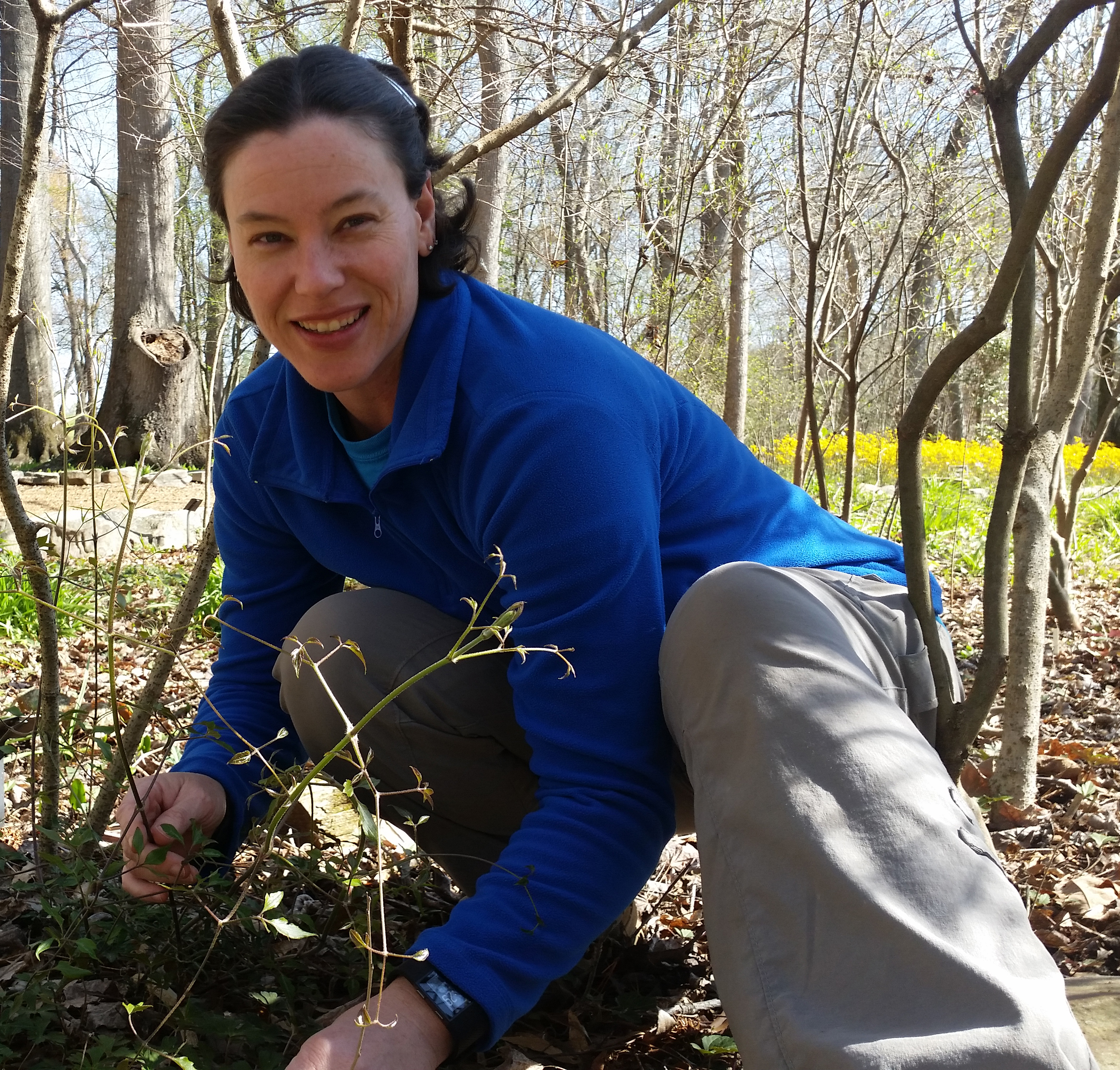Do you want to know which plants beat the heat and thrive in August? The following plants are just a few in our collections that make summer a beautiful time to visit the Huntsville Botanical Garden!
Crapemyrtles
Crapemyrtles are in the loosestrife family, Lythraceae, and are native to the Indian subcontinent, southeast Asia, and Australia. The genus, Lagerstroemia, is named after the Swedish merchant Magnus von Lagerström, a director of the Swedish East India Company who supplied Carl Linnaeus with plants he collected. It contains around 50 species of both deciduous and evergreen trees and shrubs.
Lagerstroemia species are an iconic plant of southern gardens because of the variety of forms, sizes, bloom colors, and especially the long-duration of flowering. Some notable crapemyrtles from our collection include:
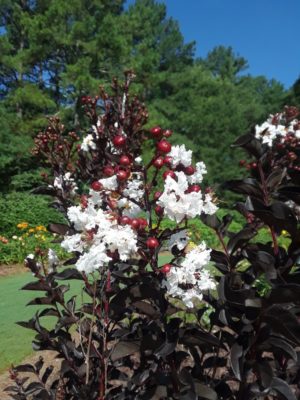
Lagerstroemia indica ‘Ebony and Ivory’ (Located in the Annual Garden)
‘Ebony and Ivory’ crapemyrtle showcases dazzling long-blooming white flowers that contrast with the dark purple to black foliage making it an eye-catching shrub or small tree for accents or focal points. It is drought tolerant and deer resistant and likes well-drained soils in full sun.

Lagerstroemia x BARISTA® ‘Frappe Pink’ (Located between the lakes)
‘Frappe Pink’ crapemyrtle is a new introduction that boasts abundant coral-red buds that open pink on a miniature shrub that matures at 30 inches tall and wide. It likes full sun and is pollinator friendly with excellent drought tolerance and deer resistance once established. Hardy to USDA zone 6, it blooms on new wood making it possible to push the northern range of the species and still enjoy summer blooms.
Joe Pye Weed
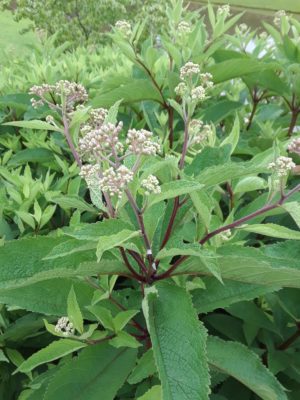
‘Gateway’ Joe Pye weed, Eutrochium purpureum (Located at the Damson Aquatic Garden & at lakes)
Joe Pye weed isn’t a weed at all! It’s a very tall native perennial in the Aster family with fragrant blooms that attract butterflies. It naturally occurs in low moist ground, wooded slopes, wet meadows and thickets and stream margins and likes full sun to part shade, tolerates heavy clay soils and wet soil conditions, and is resistant to deer browse. Although it goes completely dormant in the winter, the attractive seed heads are retained providing winter interest. ‘Gateway’ is a cultivar that is bred to be shorter (only 4 feet tall) than the original species which can reach up to 7 feet high!
Scarlet Rose Mallow
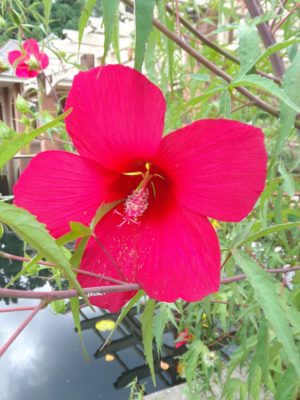
Scarlet Rose Mallow, Hibiscus coccineus (Located at the Damson Aquatic Garden)
Scarlet Rose Mallow is a member of the Hibiscus family that is native to marshes and swamps in Alabama, Georgia, and Florida, and performs best in locations with full sun to part shade and moist to wet soil. This sturdy, erect, woody-based perennial takes heat and humidity very well, and the large red long-lasting blooms attract hummingbirds and butterflies. It tolerates deer browse, but needs supplemental water during dry periods. This is a great plant for long-lasting late summer color in boggy areas.
Catmint
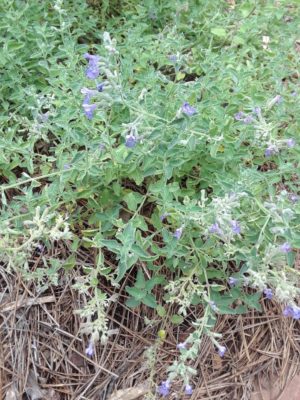
Catmint, Nepeta x faasenii (Located midway in the Four Seasons Garden and Kitchen Garden)
Nepeta x faasenii, commonly called Faasen’s catmint, is Native to the Caucasus and northern Iran. It is a herbaceous perennial that typically forms a spreading mound of grey-green foliage with lavender-blue flowers that bloom from early summer to fall. While the original species may aggressively self-seed under optimal conditions, ‘Walker’s Low’ is cultivated to have sterile seeds. This well-behaved low maintenance plant thrives in dry or shallow soils, has fragrant foliage, and a showy display of abundant small flowers that attract pollinators of all kinds.

